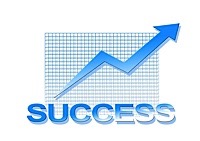
The New York Times suggests, vaguely, that today on the eve of the iPad 3 announcement the future of the PC looks dim. "As New iPad Debut Nears, Some See Decline of PCs" is its hand-wavy position on the matter, with a first paragraph quoting Apple CEO Tim Cook pondering "the day will come when devices like the Apple iPad outsell traditional personal computers." Forget the sales figures--it's not simply about how many of these things are bought ... that's almost irrelevant. In far more important ways the tablet era is already here, and the PC's relevance may end sooner than you think. It's all but over.
The argument starts with the iPad 3's strongly rumored super-high-resolution screen at 2,408 by 1,536 pixels on a 9.7-inch LCD. That's around the level needed to qualify it as a "retina" display, meaning that at typical user-to-screen distances, your fallible human eyeball isn't physically capable of spotting the pixels. To all intents and purposes, your brain will see the iPad 3's screen as equivalent in quality to a (glowing) printed page from a glossy magazine. It's a screen tech that probably surpasses the pixel resolution of your laptop, your home PC, and definitely your fancy full 40-inch HDTV. The screen alone is an innovation that may enable a whole new approach to e-publishing, at an optical quality that bests printed text in books or magazines, and it could change even change gaming--imagine holding this portable high-res unit in your hands, with the characters of the game reacting to the way you move the device.




















